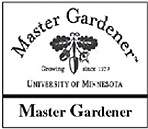February 6, 2004 at 11:53 a.m.
Last year was the first year we offered the opportunity to pre-order bare root strawberry and raspberry plants that were sent to us in the spring. This year we will be adding blueberries and grapes to our selection.
Visitors to the Bonanza will also have the opportunity to attend classes taught by those who are in the know about these fruits. This year Jim Birkholz, owner and operator of Pleasant Valley Orchard, will do two sessions on strawberries. For the past three years, Jim has taught classes on the pruning and care of fruit trees. However, for the past two years he has also raised pick-your-own strawberries at his orchard. His classes; “Planning to Plant” and “First Year to Harvest” will help those interested in strawberries to learn more about them.
I plan to write about each of the fruits we will be selling leading up to our Bonanza March 6. I’m not starting with strawberries because I am an expert, quite the contrary. I’ll let Jim do that. I did however, come across some interesting information on strawberry trials that I thought I would share.
All of the varieties we will be selling at the Bonanza are varieties that have been tested and proven for our area. Many of them developed at the University of Minnesota. This is not always the case when you buy plants elsewhere, especially through catalogs.
The U of M released its first three strawberry cultivars in 1920. Several more were released through 1960 and then nothing until 1982. None of these varieties are now available.
It can take 12 years to produce a new strawberry cultivar and the average lifespan for a cultivar seems to be about 20 years. The older ones fall from favor with introduction of more resistant, hardier, better tasting and bigger fruited varieties.
When doing field testing for strawberries that will be suitable in Minnesota there are several areas to be tested. Minnesota’s climate and geography make it a fine place to trial fruit for hardiness. Grand Rapids is in USDA zone 3, while Excelsior and Morris are in zone 4. Grand Rapids gets bitter cold and often a lot of snow. In Morris one can add prairie winds to the Minnesota winter.
Snow is a great insulator, so a really cold, snow-less winter can really damage plants. Minus 30 degrees in January with little snow can be as damaging as bitter cold in mid November before the strawberries have really hardened off. An early spring followed by a sharp cold snap also raises havoc.
If the cold doesn’t kill the plants, summer stresses caused by heat and wind might do it. Stress often brings on disease. There is more leaf spot in Grand Rapids because that fungal disease likes cool and humid weather. In Morris and the Twin Cities, leaf scorch, encouraged by warm humid conditions, is more common.
After a strawberry survives the field trials it is interesting to know what happens to it. Twenty-five years ago, 90 percent of Minnesota strawberries were pick-your-own. Now, only two-thirds is pick-your-own and the remaining portion is sold as pre-picked at farm stands, farmer’s markets, small co-op and grocery stores and local restaurants that feature local produce. You will not find Minnesota strawberries at your local mega-grocery.
It is estimated that 5 percent of Minnesota strawberries are processed into pies and preserves on a small commercial scale, so commercial processing is less of a factor than home cooking. Many of us head to the farmer’s market to buy strawberries for homemade jams, as such need little acidic flavor to offset the sugar used in jam making.
Brochures are available for Bonanza 2004 “Garden Fever,” which will be held at Maranatha Church, in Forest Lake, March 6. Call or email to receive a brochure or if you are interested in being a vendor, 651-237-3080 or [email protected]. Forms are also now available to preorder bare root strawberry, raspberry, blueberry and grape plants. Many of these are cultivars developed at the University of Minnesota and used by commercial growers, but hard to find for home use. You can view the brochure and order form on the web at: http://www.extension.umn.edu/ county/Chisago/news/brochure2004%20final.pdf





Comments:
Commenting has been disabled for this item.